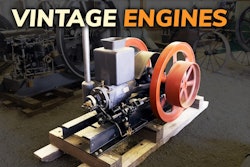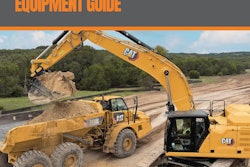
All you equipment lovers looking for a summer road trip might consider the site of Big Muskie’s bucket.
A new marker went up this month in Ohio to celebrate the largest dragline ever built.
(You can check out Big Muskie in action in the video at the end of this article.)
The marker was placed with Big Muskie’s gargantuan 220-cubic-yard bucket, which is all that remains of the 27-million-pound Bucyrus-Erie 4250W that moved 483 million tons of earth for the Central Ohio Coal Company from 1969 to 1991.
 Big Muskie's 220-cubic-yard bucket at Miner's Memorial Park in McConnelsville, Ohio.Ohio Department of Natural Resources
Big Muskie's 220-cubic-yard bucket at Miner's Memorial Park in McConnelsville, Ohio.Ohio Department of Natural Resources
Big Muskie’s story begins in 1967 when it took more than 300 railcars and 250 trucks to haul the walking dragline’s parts to the Muskingum Mine in eastern Ohio. After two years of assembly, the dragline stood 240 feet tall and 150 feet wide. It was longer than a football field at 487 feet.
It took 14,000 to 18,000 kilowatts per hour to run Big Muskie’s electric motors, which produced up to 52,500 horsepower. The dragline ran 24 hours a day, only stopping for 30-minute meal breaks for its four, seven-person crews, for repairs and for Christmas Day.
Its job was to strip away layers of soil and rock that covered high-sulfur coal. That ended with the 1990 Clean Air Act that promoted the use of cleaner low-sulfur coal and natural gas. Big Muskie was retired in 1991. Though there were attempts to save it, it was dismantled in 1999. All that’s left is its bucket – but what a bucket it is! It could move 325 tons at a time, and a Caterpillar D9 dozer could fit inside.
 Ohio Department of Natural Resources
Ohio Department of Natural Resources
“By preserving its story at Jesse Owens State Park, we’re recognizing both the ingenuity that defined an era and the environmental awareness that followed,” Mertz says. “This historical marker gives Ohioans the chance to reflect on how far we've come and where we want to go next.”
Check out the video below from the Puskarich Public Library Coal Museum to see Big Muskie in action:















